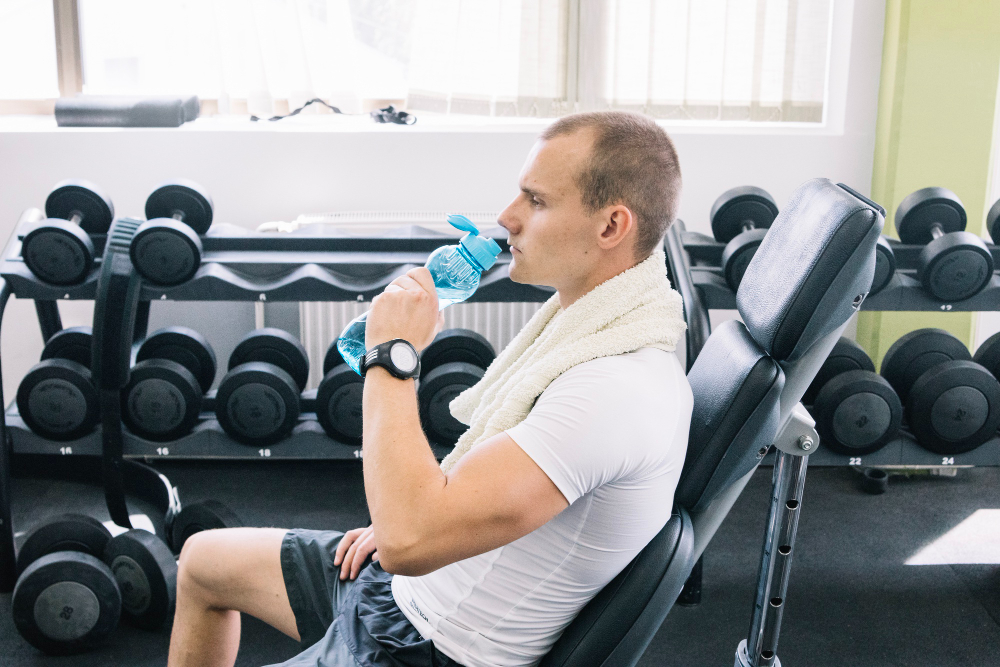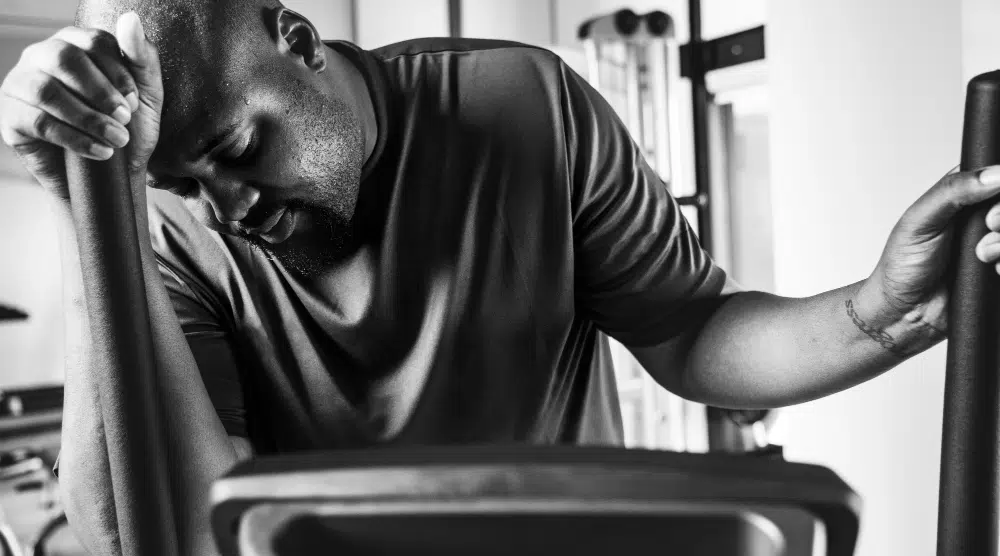When we talk about bodybuilding, we often think of the intensity of exercises and the number of repetitions. However, an essential and often overlooked aspect is the rest time between sets and workouts. Allowing sufficient time for recovery allows muscles to regenerate, develop strength and volume, and avoid injury.
Why is rest time important in bodybuilding?

Rest time has several main functions in the bodybuilding process:
- Physical recovery: During bodybuilding exercises, your muscles undergo micro-trauma, causing soreness and general fatigue. Adequate rest allows your muscles to repair and rebuild themselves stronger than before.
- Energy recovery: Intense exercise consumes large amounts of energy. Rest periods allow your body to replenish its energy reserves and ensure optimal performance during the next training session.
- Injury prevention: Back-to-back workouts without sufficient time for recovery increase the risk of injury, as muscles can have difficulty withstanding high loads when fatigued.
- Progression: When you give your body time to rest and recover, it's more likely to adapt to exercise and build muscle capacity for lasting progress.
An effective rest strategy is therefore essential to ensure optimal results in terms of strength, endurance, hypertrophy and injury prevention.
The length of the rest period between series
The rest time between sets varies according to the desired objective: mass gain, muscle building or improved strength and endurance. Depending on your objective, you'll need to adapt the length of your breaks to achieve the best possible results.
For weight gain
If you're looking to build muscle mass, we recommend resting for 2 to 3 minutes between each set. This will allow your muscles to recover partially, and then follow up with the intense efforts needed to stimulate muscle growth. What's more, this duration encourages the production of anabolic hormones such as testosterone and growth hormone, which are involved in mass gain.
For muscle strengthening
If you want to develop muscle tone and strength, a rest period of 1 to 2 minutes between sets is ideal. Partial recovery is enough to allow your muscles to provide the necessary effort without reaching total exhaustion. This type of break also encourages the production of hormones responsible for muscle strengthening.
For improving muscular endurance
If your aim is to increase muscular endurance, short rest periods (30 to 60 seconds) are preferable. This increases the capacity of your muscles to work in conditions of limited oxygenation, thereby improving their endurance. Be careful, however, not to reduce resting time to the point of compromising the quality of movement execution or causing excessive fatigue.
For muscular hypertrophy
The main objective when seeking to increase muscle mass is to create intense mechanical stress on the muscles to stimulate their growth: this ismuscular hypertrophy. A rest period of 1 to 2 minutes between sets is often recommended. This relatively short duration helps to maintain a high level of intensity throughout the workout, thus promoting muscle congestion.
For strength and power
To develop strength and power, it's important to work with high loads and limited repetitions. In this context, a rest period of 3 to 5 minutes between sets is generally recommended. This allows you to recover sufficiently to perform the following repetitions at maximum intensity.
Rest time between training sessions
It's also important in bodybuilding to consider the rest time needed between different training sessions. By giving your muscles time to regenerate after intense effort, you'll optimize your progress and avoid overtraining, which can lead to injury or slowed or arrested muscle growth.
For beginners
If you're new to bodybuilding, it's advisable to allow a minimum of 48 hours for recovery between two sessions involving the same muscle groups. This will enable you to avoid excessive fatigue and gradually build up your endurance, without risking injury. Over time, you can adjust this duration according to how you feel and how you progress.
- For experienced athletes
For experienced athletes, the rest time between two training sessions targeting the same muscles will depend on the loads lifted, the frequency of the sessions and the individual's ability to recover. Overall, a rest period of 24 to 72 hours is recommended to allow proper regeneration of the muscle fibres used during exercise.
- Insufficient recovery can be detrimental to performance: so it's important to listen to your body and allow yourself sufficient rest time according to your needs.
- Adapting training frequency: Depending on your level, you can adapt the number of weekly sessions to achieve optimum results while respecting the necessary recovery time.
Factors influencing rest time
Various factors can influence the amount of rest time required in strength training. It's essential to take these into account to maximize the benefits of each training session and avoid overtraining or injury.
Age
With advancing age, muscles take longer to recover from effort. As a result, an elderly person will need longer rest periods than a younger person to avoid excessive fatigue, risk of injury and stagnation of performance.
Type of exercise
Exercises involving several muscle groups (such as squats or push-ups) generally require longer rest periods than those targeting a specific muscle (such as bicep curls or tricep extensions). Similarly, strength exercises will require a slightly longer rest than endurance exercises.
Session intensity
The higher the intensity of your workouts, the more time you'll need to recover between sessions. So it's crucial to balance workload and rest periods to maximize progress while preserving your physical health.
Tips for optimizing your rest periods
Finally, here are a few tips to help you make the most of your rest periods in bodybuilding:
- Listen to your body: Learn to recognize the signs of fatigue and, if necessary, adapt the length of your breaks and the frequency of your workouts. Rest needs vary from person to person, depending on factors such as age, fitness level and lifestyle.
- Don't neglect sleep: Sleep is essential for optimal recovery. Try to adopt a regular sleep schedule and make sure you get at least 7 to 8 hours of sleep a night.
- Practice relaxation techniques: Don't underestimate the benefits of a good stretching session or post-workout massage. These techniques help promote muscle relaxation and facilitate recovery.
- Eat a balanced diet: A diet rich in quality proteins, carbohydrates and fats helps replenish energy reserves, repair damaged tissue and support muscle development.
How do you manage rest time between sessions?

It's up to you to choose the right rest time according to your training program and specific objectives. However, it is generally advisable to follow certain rules to avoid overtraining:
- Leave at least one day's rest between two sessions involving the same muscles: This principle gives the muscles concerned the time they need to repair and strengthen.
- Take at least one complete rest day a week: It can be tempting to train every day, but remember that recovery is essential to progress. One rest day a week without intense exercise allows your body to recover and reduces the risk of overtraining.
Rest times for bodybuilding: in a nutshell
In conclusion, rest time in bodybuilding plays a major role in progression and injury prevention. The length of breaks between sets, and between training sessions, should be adapted according to your objective, your level and individual factors such as age and type of exercise.












